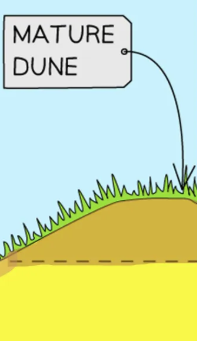Coastal Sand Dunes
1/7
Earn XP
Name | Mastery | Learn | Test | Matching | Spaced |
|---|
No study sessions yet.
8 Terms
Humus
Rich, dark, organic component of soil
Forms from the decomposition of dead plant and animal matter
Provides essential nutrients and improves soil structure, water retention, and fertility
Acts as a carbon sink
Sand Dune Succession
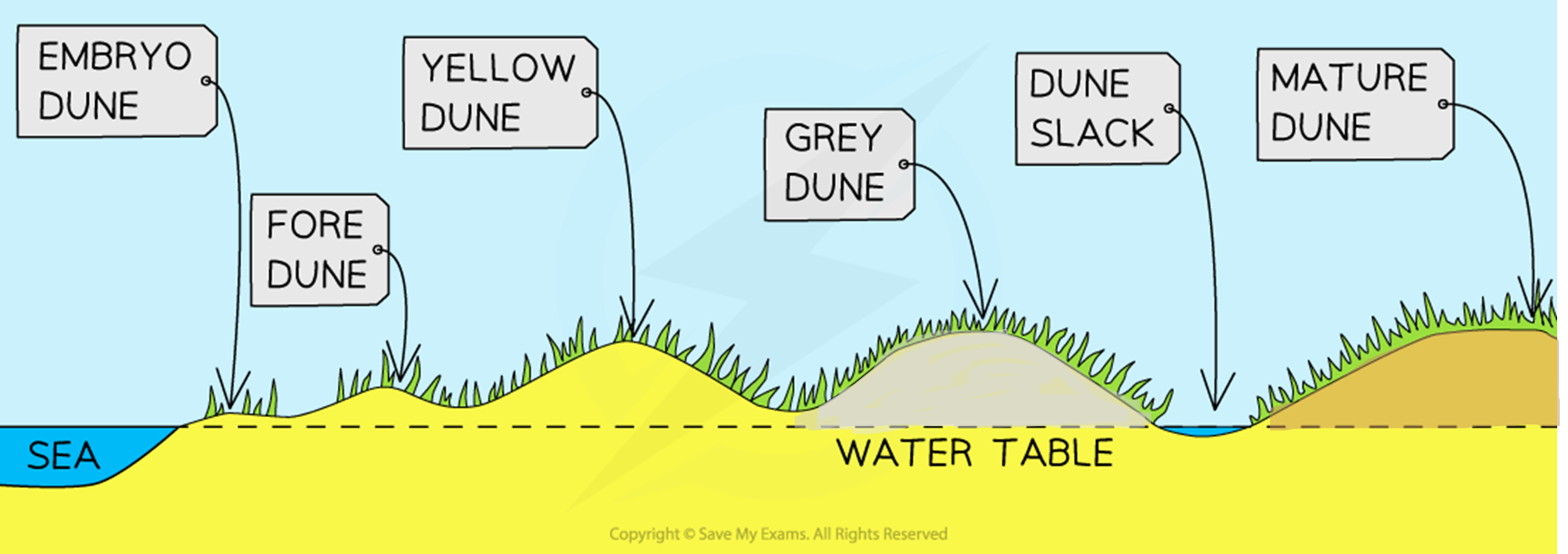
Stage 1
Embryo dune
Young and very small
Pioneer species colonise and stabilise the sand
Sand accumulates around the newly colonised plant
These dunes are fragile and tides can easily wash them away

Stage 2
Foredune
Behind the embryo dunes as they build up
Marram grass begins to grow, stabilising the dune further
Species start to become more diverse and cover the ground
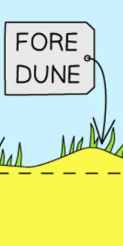
Stage 3
Yellow dune
Sit above the beach level
The diversity of organisms increases
Marram grass incorporate humus, into the dune, creating soil - making the sand/soil more nutrient-rich
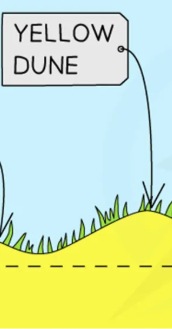
Stage 4
Grey dune
Have more protection
Sand is more protected from the wind and stabilised by vegetation
Fixed dunes
Soil improves

Dune Slack (Stage 5)
The dip between sand dunes
Moist or entirely filled with water
Nutrient-rich and home to a variety of plants and animals
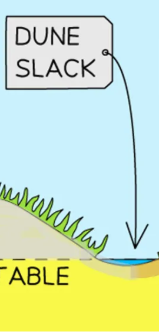
Stage 6
Mature dune
Reaches climax community - final point of a succession that stays unchanged
Conditions are much more favourable, with moisture and nutrient-rich soils
Far above the high-tide level
